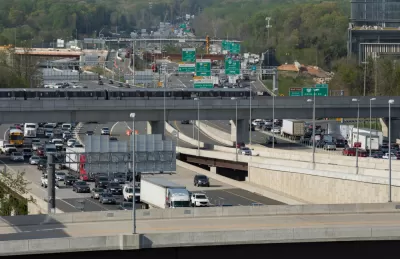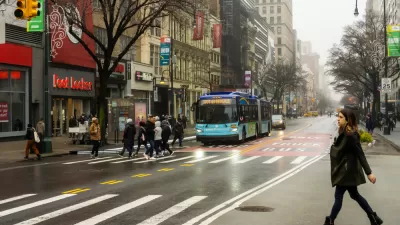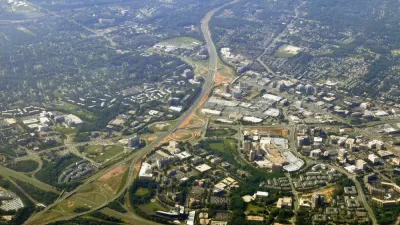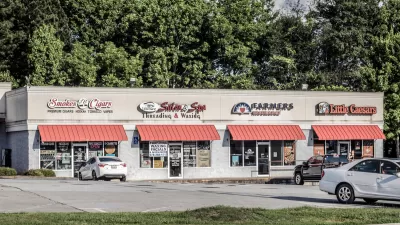Ten years after Tysons, an unincorporated community in Fairfax County, Virginia, approved an award winning comprehensive plan, there's still work to be done to achieve its ambitious goals.

Emily Hamilton, a research fellow and director of the Mercatus Center at George Mason University’s Urbanity Project, checks in with the status of the transformation of Tysons ten years after the city adopted a comprehensive plan to take advantage of the arrival of light rail transit and a growing residential population in this corner of Fairfax County of Northern Virginia.
According to Hamilton's assessment, Tysons has work to do to achieve the goals set forth in the plan. "The plan was heralded by the American Planning Association for seeking to transform a sprawling, highway-oriented area into a series of transit-oriented, walkable neighborhoods. So far, for all its progress, it has not ushered in an era of easy walkability," according to Hamilton. (The Tysons Comprehensive Plan earned the 2011 Daniel Burnham Award for a Comprehensive Plan from the American Planning Association.)
This is the second article by Hamilton evaluating the progress of the Tysons Comprehensive Plan. In the first article, Hamilton focused on the effect on walkability from the wave of new residential development in Tysons since 2010. This latest article focuses on the transportation planning choices that have limited the success of the plan:
A freeway and multiple major arterial roads cut through Tysons. The comprehensive plan calls for slowing cars down and transforming the arterials into tree-lined boulevards with wide sidewalks and medians that would make them safe for pedestrians.
At the same time, the plan promised to maintain commute times for drivers going to or through Tysons. To this end, policymakers have actually widened some Tysons arterials rather than making major improvements to them for walkers. To cross parts of Route 123, walkers have to traverse 12 lanes of traffic.
Still, according to Hamilton, the Tysons Comprehensive Plan was set up to succeed, and it's still possible to achieve all of the ambitious goals included in the plan.
FULL STORY: Ten years into redevelopment, is Tysons what we envisioned?

Alabama: Trump Terminates Settlements for Black Communities Harmed By Raw Sewage
Trump deemed the landmark civil rights agreement “illegal DEI and environmental justice policy.”

Study: Maui’s Plan to Convert Vacation Rentals to Long-Term Housing Could Cause Nearly $1 Billion Economic Loss
The plan would reduce visitor accommodation by 25% resulting in 1,900 jobs lost.

Why Should We Subsidize Public Transportation?
Many public transit agencies face financial stress due to rising costs, declining fare revenue, and declining subsidies. Transit advocates must provide a strong business case for increasing public transit funding.

Wind Energy on the Rise Despite Federal Policy Reversal
The Trump administration is revoking federal support for renewable energy, but demand for new projects continues unabated.

Passengers Flock to Caltrain After Electrification
The new electric trains are running faster and more reliably, leading to strong ridership growth on the Bay Area rail system.

Texas Churches Rally Behind ‘Yes in God’s Back Yard’ Legislation
Religious leaders want the state to reduce zoning regulations to streamline leasing church-owned land to housing developers.
Urban Design for Planners 1: Software Tools
This six-course series explores essential urban design concepts using open source software and equips planners with the tools they need to participate fully in the urban design process.
Planning for Universal Design
Learn the tools for implementing Universal Design in planning regulations.
Caltrans
Smith Gee Studio
Institute for Housing and Urban Development Studies (IHS)
City of Grandview
Harvard GSD Executive Education
Toledo-Lucas County Plan Commissions
Salt Lake City
NYU Wagner Graduate School of Public Service





























